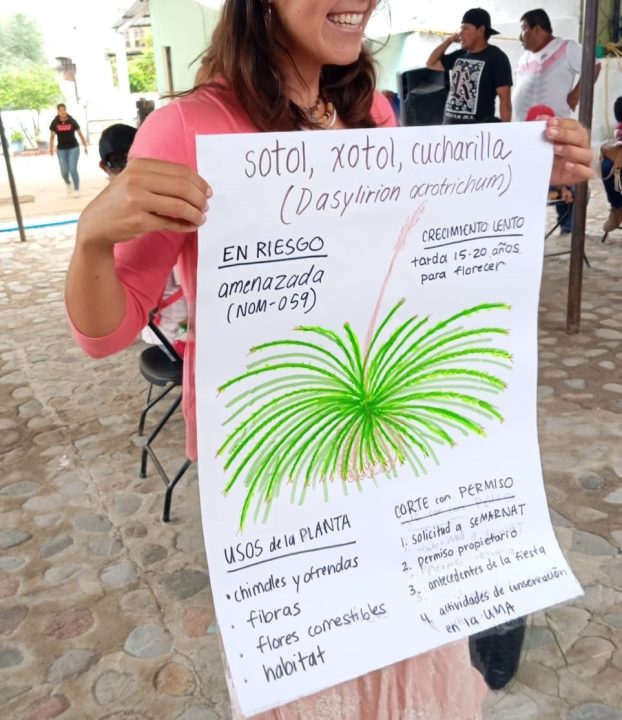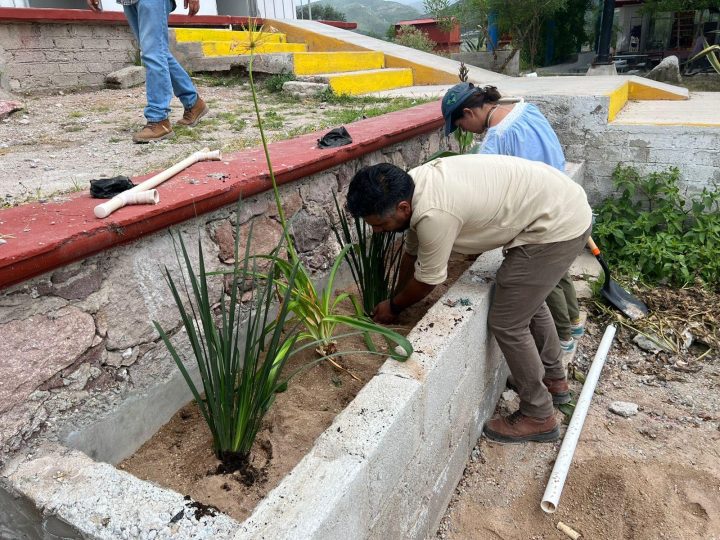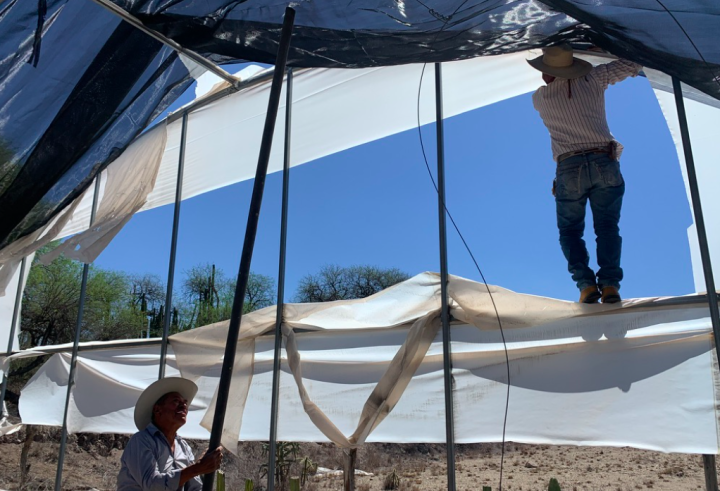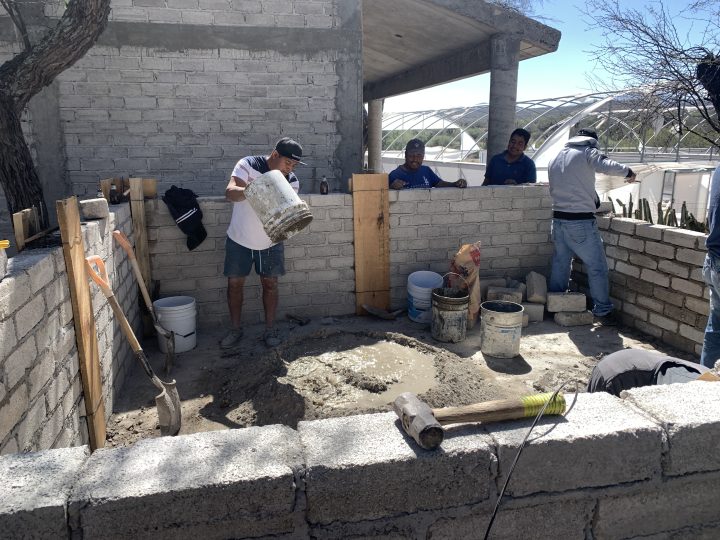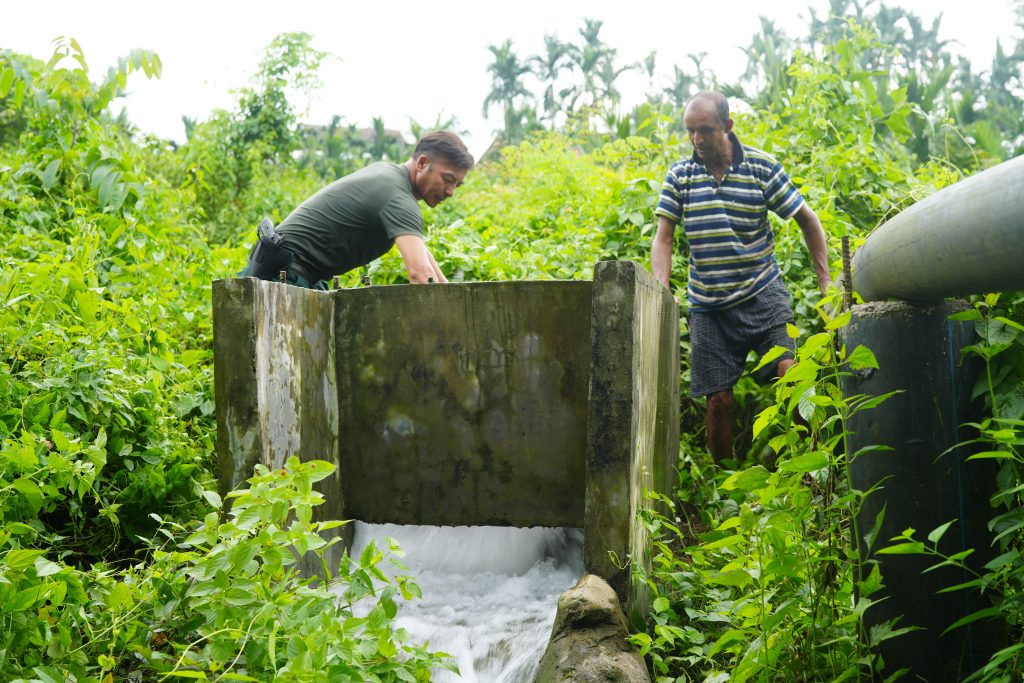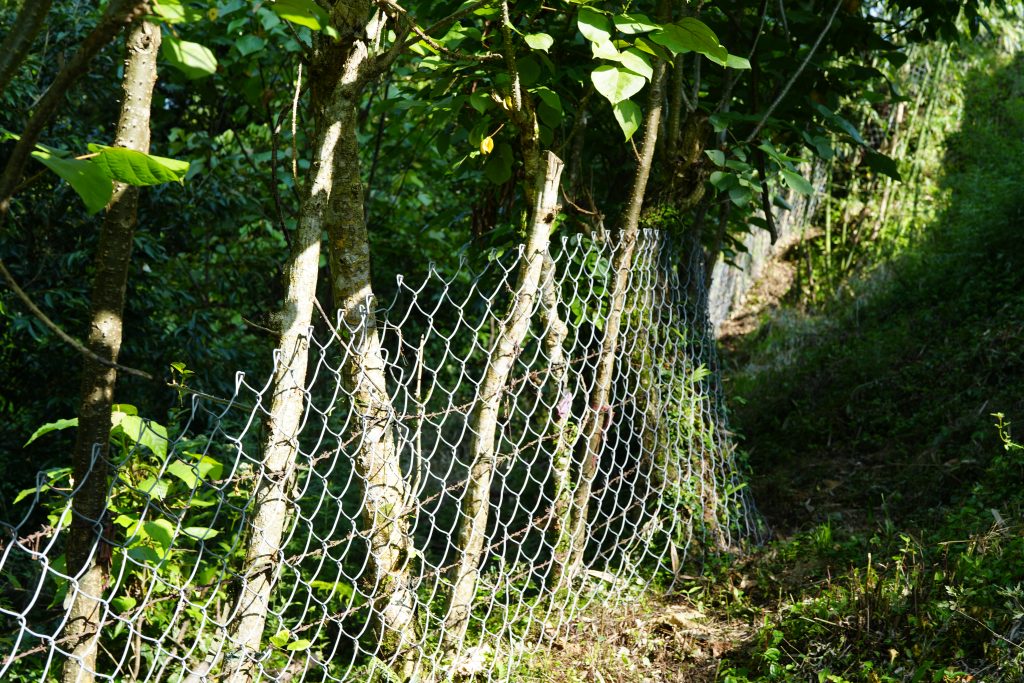Purpose
Increase water availability for community members while promoting environmental awareness and endangered species conservation.
Climate Impacts
The following impacts were reported by community members in Tolimán:
• Biodiversity loss
• Water scarcity
• Drying of water sources
• Reliance on water deliveries from trucks
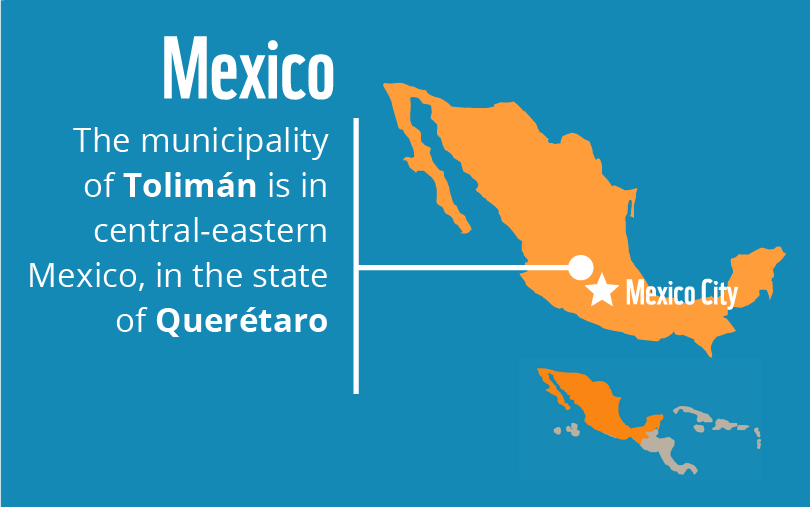

Activities
Conservation presentations
Two presentations on the conservation of sotol, a culturally significant endangered plant, were held for ejidatarios (communal landowners). Monthly workdays were organized to water sotol on their land.
Environmental mural contest
An open call for environmental-themed mural designs was held. Judges decided four winners, and the winning designs were painted with the help of the community.
Construction of rainwater harvesting basin and greenhouse shade cover
One 16,000-liter rainwater harvesting basin was constructed by community members at a local organization focused on sotol conservation. A greenhouse shade cover was also made by community members to provide shade for young sotol plants.
Printing and distribution of sotol conservation brochures
Brochures detailing the importance of sotol conservation and what community members can do to help were printed and distributed throughout the community.
Biofilter workshop and construction
In a local high school, students and other community members learned about biofilters and received training on how to build them. With this knowledge, they built a biofilter to recycle water from the school’s bathroom sinks.
Installation of rainwater harvesting basins
In addition to the biofilter, the high school received two plastic rainwater harvesting basins, each with a 1,100-liter holding capacity. These basins will be used to water 100 native tree species that the school is reforesting.
project outcomes
project design
In the semidesert municipality of Tolimán, Querétaro, there is a pressing need for water and biodiversity conservation to protect people, wildlife, and the rich indigenous traditions. In a town that once abounded with natural springs, criollo avocados, and rituals dedicated to the rainy season, the surrounding river now remains dry year-round and running water arrives sporadically to homes, if at all. In addition to water scarcity, Tolimán is experiencing a decline in the endangered sotol plant (Dasylirion acrotrichum) due to its overextraction for cultural purposes. Beyond this overextraction, the wild plant population is further exacerbated by being a slow-growth plant subject to drought, heat, and desertification, making it hard to germinate and survive to adulthood.
To tackle these issues, a greenhouse shade cover and a rainwater harvesting basin were constructed and installed at a local sotol conservation facility. The rainwater harvesting basin has a 16,000-liter holding capacity and was repurposed from an unfinished basin started years ago. Volunteers assisted in completing the basin which has already captured roughly 4,000 liters this season, sufficient to sustain the plants for months. These self-sustaining installations will provide a suitable habitat and reliable water source for young sotol plants to survive. This effort revitalized the facility’s conservation work, which had paused during the pandemic. Community engagement was strong, involving 79 people across 14 communities in activities like germinating over 1,000 sotol plants, which will mature in the greenhouse over five years.
To raise awareness about climate change and sotol conservation, presentations were given to ejidatarios (communal landowners), where they also organized monthly workdays to water sotol plants on their land. An environmental mural contest was organized for the community as well. Fifteen people submitted designs, and four designs were selected, highlighting themes of local biodiversity, water conservation, pollution, and safeguarding biocultural traditions.
Additionally, given the region’s water scarcity and increasingly hot years and the ensuing challenge of sustaining green spaces in schools and communities, local high schoolers were engaged to construct a greywater biofilter to recycle about 50 liters of water per day from bathroom sinks, benefiting 220 students yearly. This cement biofilter uses layers of earth, rocks, and semi-aquatic plants for natural filtration, requiring minimal maintenance and providing a reliable water source. The school plans to plant native trees around the biofilter to support local biodiversity.

